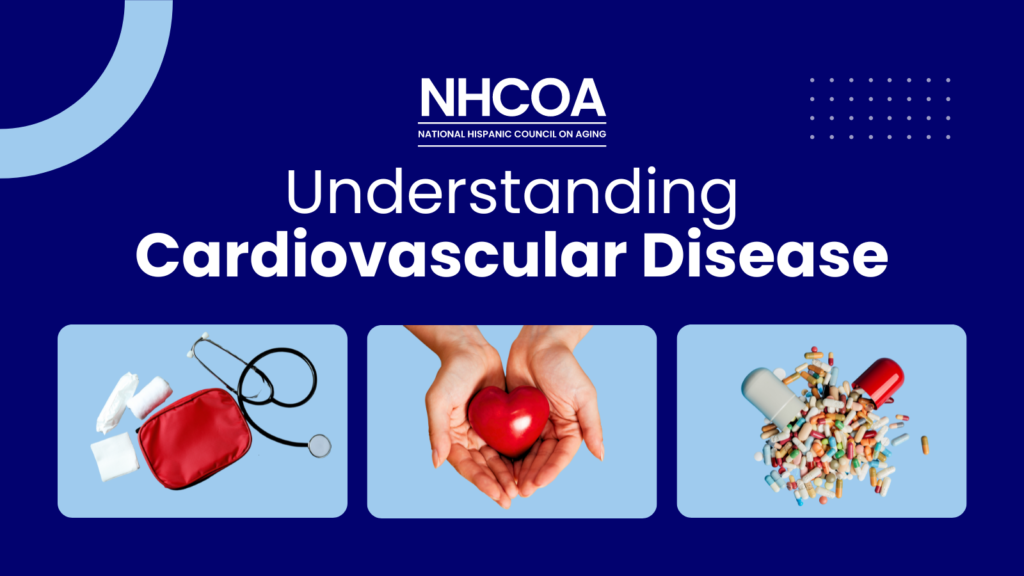
Every year, Cardiovascular Diseases (CVD) take a staggering toll on the Unites States population. According to the American Heart Association, CVD takes more lives per year than chronic lower respiratory tract diseases (CLRD) or cancer combined. CVD accounted for approximately 19 million deaths worldwide in 2020 alone.
In 2000, the Pan American Health Organization (PAHO) approved a resolution urging governments “to strengthen and prioritize both community and health service interventions, especially in primary health care, related to the prevention and control of cardiovascular diseases and arterial hypertension in particular.” In light of the growing number of lives taken each year since then, CVD treatment and prevention remains a top priority for healthcare organizations.
With our continued efforts to improve the health and wellness of our communities, NHCOA took the opportunity to interview Dr. Genory Gutiérrez Vega, an expert in her field. Dr. Genory Gutiérrez Vega, is the Medical Coordinator of the “Dr. Dagoberto Pereira” Cardiology Center; she graduated from the University of El Salvador, received her degree in Electrocardiography from Fast Care Academy and her degree in Sports Medicine from José Matías Delgado University. Dr. Gutiérrez answered a series of important questions about cardiovascular diseases that allow us to better understand how to treat and prevent them.
What are cardiovascular diseases?
“The term cardiovascular diseases is used to refer to all diseases that affect the heart and blood vessels. We can mention atherosclerosis, which consists of a condition of the blood vessels due to the formation of a fatty plaque, called atheroma, which obstructs the arteries, reducing the proper blood flow and eventually causing a heart attack or stroke, for example.”
What is bad cholesterol (LDL) and good cholesterol (HDL)?
“The so-called ‘bad’ cholesterol is LDL, which stands for Low Density Lipoprotein, and the ‘good’ cholesterol is HDL, which stands for High Density Lipoprotein. These two substances together, with the very low-density lipoproteins also known as VLDL, are responsible for the transport of lipids (fats) in the body so that the cells can use them for the formation of their membranes.
The problem occurs when there is an excess of cholesterol in our body and it exceeds normal levels. In other words, LDL and VLDL accumulate and form the atheroma plaque that covers the lumen of the blood vessels, while HDL has the capacity to transport this cholesterol from the vessels to the liver for excretion. For this reason, LDL is usually called bad cholesterol and HDL [is usually called] good cholesterol.”
What are the symptoms of cardiovascular problems?
“In general, these types of diseases do not produce very obvious symptoms, which is why they are known as ‘silent killers.’ Atherosclerosis, for example, is a disease that can be present in a person for many years before a heart attack occurs. Hence the importance of having general check-ups regardless of whether we feel fine or not.
However, there are signs or symptoms that can give us indications of the development of CVD. We should examine our lifestyle: if a person is sedentary, and their diet is high in fat and flour, the likelihood of having high cholesterol is very high. If we add to this the existence of [being] overweight or obesity, or if there is a family history of this type of disease, the risk increases.
Symptoms can be noticeable when living with the disease, among them we can mention dizziness and tingling sensation in the arms. Since these symptoms also occur due to other diseases, it is recommended that at least once a year you have a general check-up with your doctor, including laboratory tests.”
Who is more at risk of suffering from cardiovascular disease?
“In the past, it was considered that the risk increased with age, meaning that the older the person was, the greater the risk. It was considered that the disease could occur after the age of 50. However, nowadays, due to the bad lifestyle habits of the general population, these diseases appear in young people and even teenagers.
However, it is important to mention that when a patient is at an older age it is likely that they have been suffering from the disease for many years and are more likely to suffer a heart attack or stroke.
Therefore, the risk depends on other factors and people with bad lifestyle habits such as a sedentary lifestyle, poor diet, smoking, alcoholism, and in addition to this, the risk of genetic predisposition and the existence of other diseases such as diabetes, will be more likely to suffer from CVD.”
Does the patient’s gender have an influence on the development of these diseases?
“Yes, there is a greater predisposition in men compared to premenopausal women, where it is suggested that there may be a hormonal influence in this predisposition.”
How can we prevent cardiovascular diseases?
“By exercising daily, eating a good diet low in fats, sugars and flour, avoiding smoking and excessive consumption of alcoholic beverages or other substances.
In summary, heart disease (CVD) can be prevented or treated by maintaining a healthy lifestyle, improving our stress control and mental health. Also, having a general health check-up at least once a year to rule out any conditions.”
References:

Recent Comments